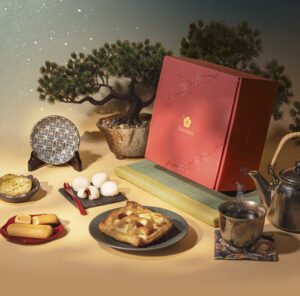Japanese cooking methods and ingredients have created new dishes in many countries for several decades. This global impact shows how much people enjoy the creativity and taste of Japanese food. Let’s learn more about Japanese cuisine worldwide, starting with tiradito!
Table of Contents
ToggleTiradito
Tiradito is a delicious Peruvian dish that perfectly blends Japanese and Peruvian flavors. This dish showcases the influence of Japanese immigrants on Peru’s cuisine, commonly referred to as Nikkei cuisine. It’s a favorite dish at Peruvian restaurants and festivals
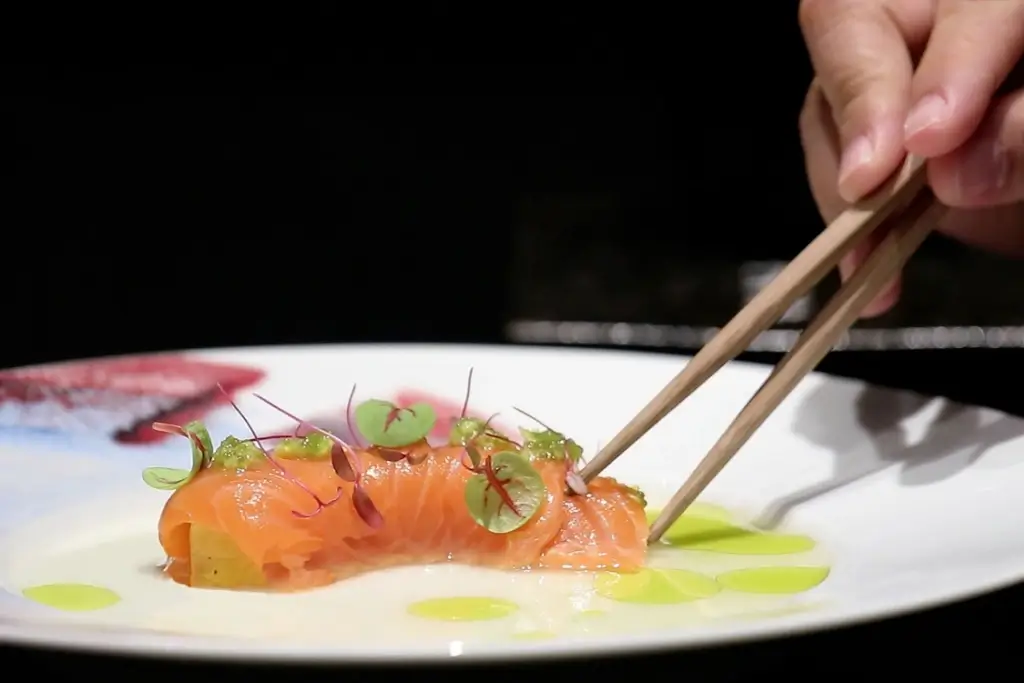
Chefs prepare tiradito using thin slices of raw fish, similar to Japanese sashimi. They serve it with a bright and zesty sauce made from lime, chili peppers, and a touch of oil. They dress tiradito with the sauce moments before bringing it to the table. This means the fish stays raw, fresh, and silky in texture, offering a different experience.
Restaurants often serve tiradito with sides like sweet potatoes and boiled choclo (giant corn), which balance the dish’s spicy and tangy flavors with their sweetness and crunch. Sometimes, creative versions of tiradito include scallops, a light sear on the fish, or unique garnishes. No matter the variety, the freshness of the seafood is always the highlight.
Teriyaki cuisine
Teriyaki is a traditional cooking style that began in Japan during the Edo period (1603-1868). It was a way to make fish more flavorful while grilling or broiling it. People used a special sauce made of soy sauce, sugar, and mirin (sweet rice wine) to glaze the fish. Over time, teriyaki wasn’t just for fish anymore. Chicken, beef, pork, other seafood, and even tofu became popular for making teriyaki dishes.
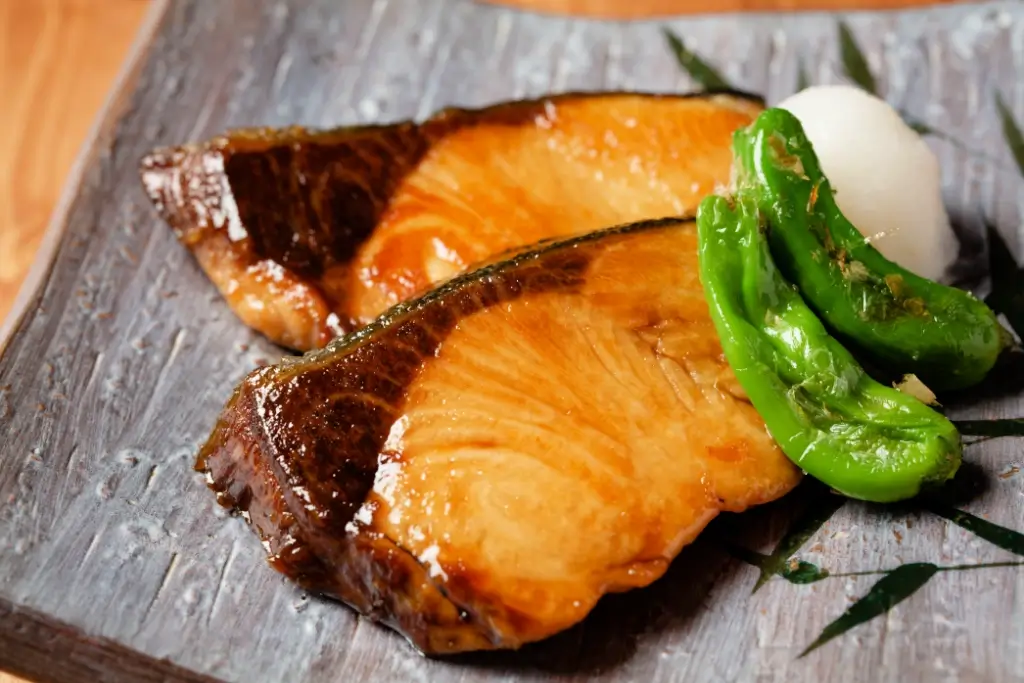
Teriyaki is famous all over the world for its sweet and savory flavor. In Seattle, many small restaurants serve teriyaki chicken or beef with rice. It’s a favorite part of plate lunches with rice and a salad in Hawaii. Teriyaki cuisine is also easy to make at home, making it a common choice everywhere!
In traditional cooking, cooks often brush the teriyaki sauce on meat or fish, making the outside caramelized and shiny. People have added twists in other places, like the United States! Some people even use pineapple juice for sweetness, and garlic or ginger gives it a unique taste. You can even find teriyaki burgers, stir-fries, and chicken wings made with this sauce!
Are you looking for great snacks with a strong cultural influence? Check out Sakuraco! Sakuraco delivers traditional Japanese snacks, teas, and sweets from local Japanese makers directly to your door so you can enjoy the latest treats directly from Japan!
Spam musubi
Spam musubi is a simple yet tasty snack that combines spam, rice, and nori (seaweed). It’s a beloved treat in Hawaii and has become famous globally. Chefs created this snack by blending Japanese and Hawaiian influences, and its history dates back to World War II.
During that time, the military sent spam to American troops, making it a common ingredient in Hawaii. People in Hawaii found a way to add spam to their local dishes. Over time, this new food became in demand, especially as a quick and easy snack for plantation workers or anyone needing a simple lunch.
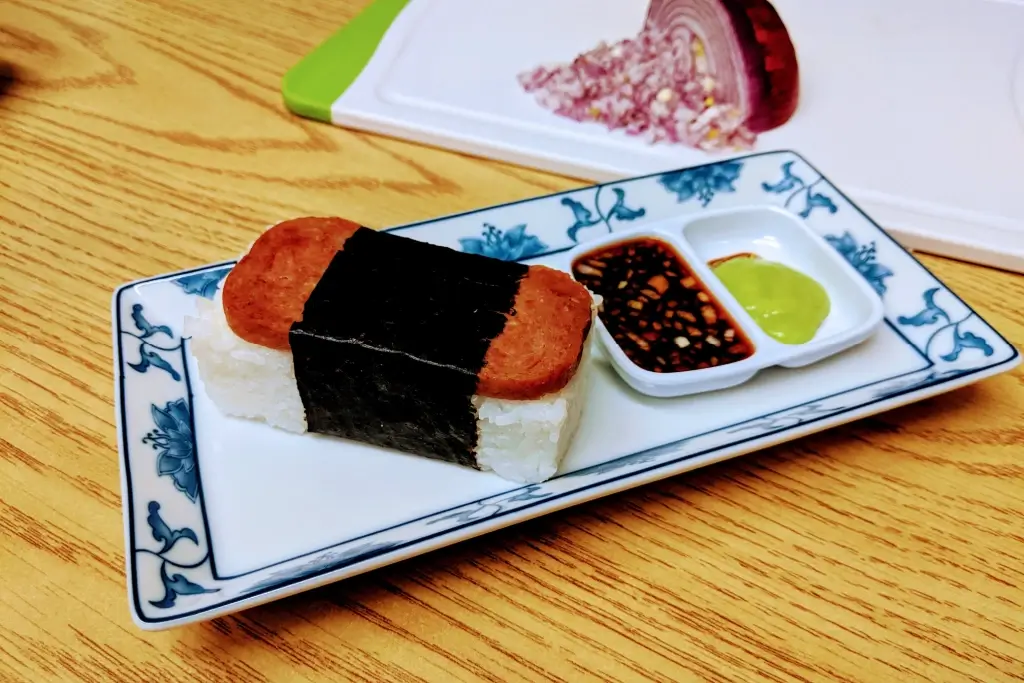
The name comes from two things: spam, canned meat, and musubi, which is a term for rice balls in Japanese cuisine. Musubi originally meant rice shaped into a ball or pressed into a mold. In spam musubi, a slice of spam is added at the top or middle. Some recipes also use sweet soy sauce for extra flavor. The rice and spam are wrapped in nori, making it easy to hold and eat.
This dish is famous for its combination of salty, savory, and sometimes sweet flavors. The crispy nori contrasts with the soft rice and the flavorful spam. Many people love adding a little furikake (seasoning mix) or even Sriracha mayonnaise for an extra kick.
California roll
The California roll is a fusion-style sushi dish created in North America, combining Japanese sushi techniques with local ingredients. It is an inside-out roll, meaning the sushi rice is on the outside, with the seaweed wrapped around the fillings inside. The main ingredients are sumiri (imitation crab) or real crab meat, cucumber, and avocado, which gives the roll a distinctive and creamy taste. Plus, the roll is often sprinkled with sesame seeds or fish roe, adding extra texture and flavor.
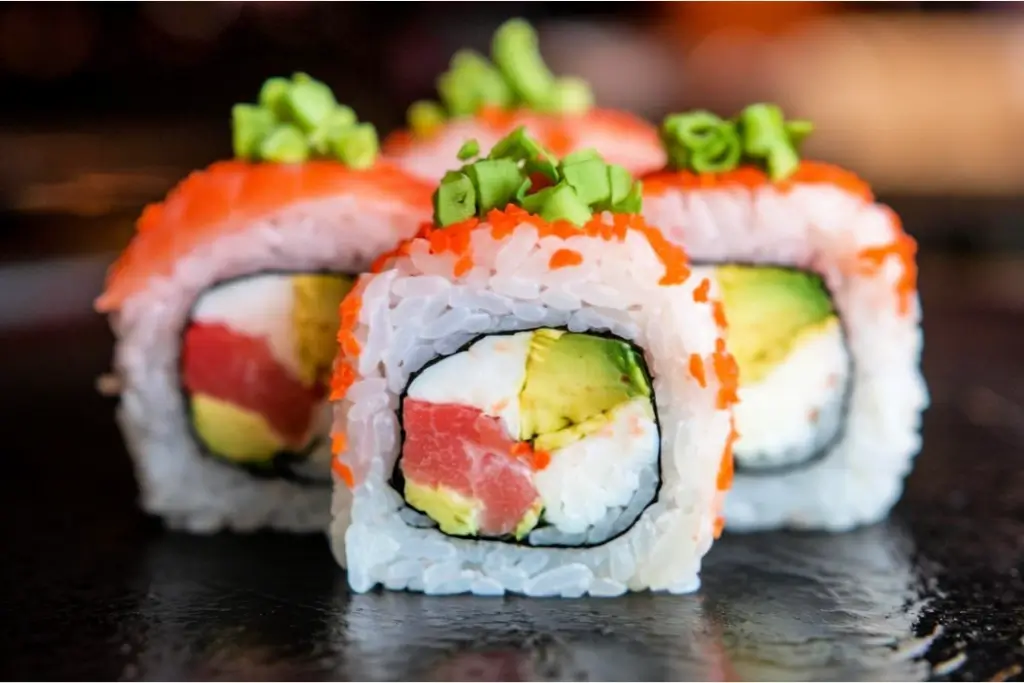
The exact origin of the California roll is unclear because several chefs say they invented it. One renowned story is that Hidekazu Tojo, a sushi chef in Vancouver, made it in the late 1970s. He wanted to make sushi more appealing to people who didn’t like raw fish or seaweed. By using cooked crab and avocado and hiding the seaweed inside, he made it easier for people to try. In addition, the name of this dish is based on the crab and avocado inside, which are shortened to “CA”, matching California’s initials.
Since its creation, the California roll has become a global sensation, especially in the United States. As time passed, sushi chefs created many variations of the California roll, adding ingredients like spicy mayo and even making vegetarian versions with tofu or tempura vegetables.
Japanese peanuts
Japanese peanuts, or cacahuates japoneses or maní japonés, are a unique snack with a fascinating history. Surprisingly, they didn’t originate in Japan but were invented in Mexico by a Japanese immigrant named Yoshigei Nakatani in the 1940s. Nakatani used his knowledge of Japanese cooking and local Mexican ingredients to create a crunchy snack made from peanuts coated in a crispy shell, flavored with soy sauce, and seasoned with various spices. Then, this new snack quickly became a favorite, especially in markets like La Merced in Mexico.
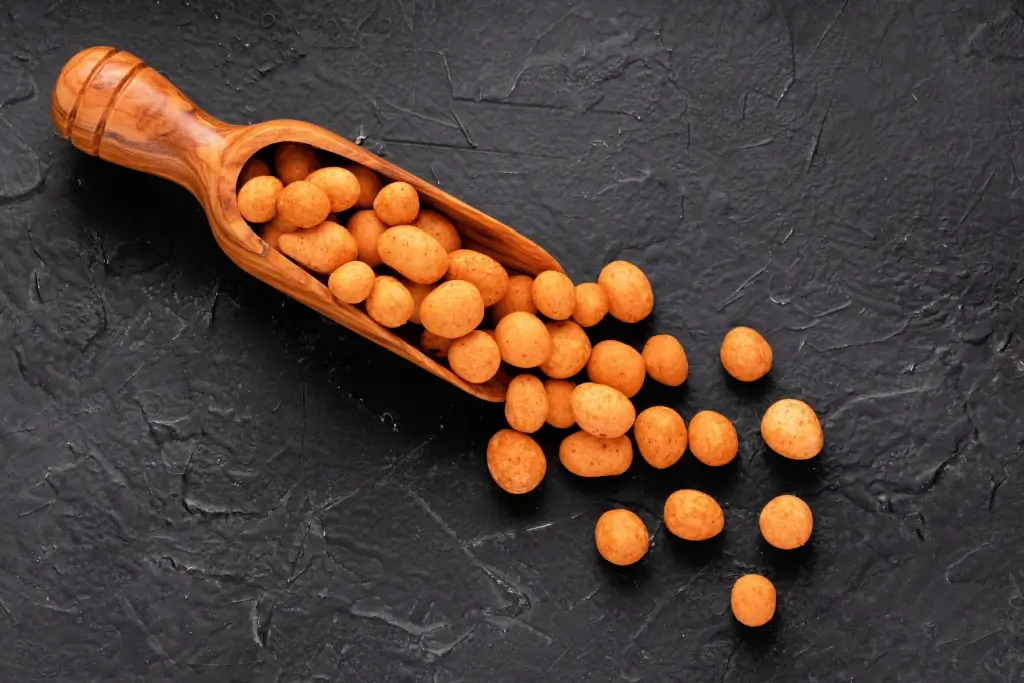
The peanuts inside stay crunchy, and the outer layer adds a delightful umami flavor. There are many varieties of these peanuts today, including spicy versions with hot sauce or chili powder, creamy options with milk flavors, and even tangy ones with lime. They are enjoyed as a snack, a side dish, or even a dish topping. These tasty treats are available in markets, grocery stores, and even by street vendors in many countries, including Mexico and the United States.
Why are dishes like tiradito important?
Dishes like tiradito are significant because they always offer a fun and tasty way to experience a fusion of Japanese and global food cultures. Moreover, from their traditional roots to global popularity today, they highlight how food evolves while staying true to its origins. Do you know of any Japanese fashion dishes around the world Feel free to share with us!




